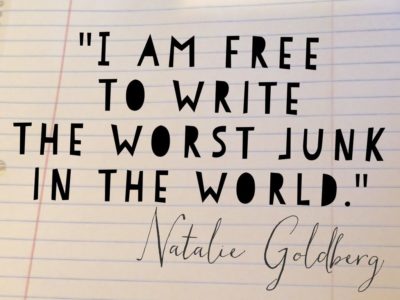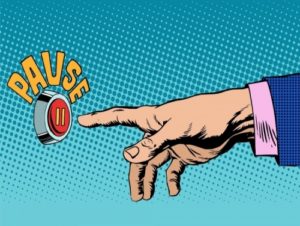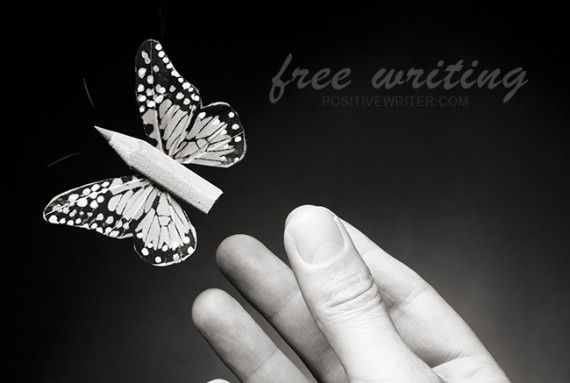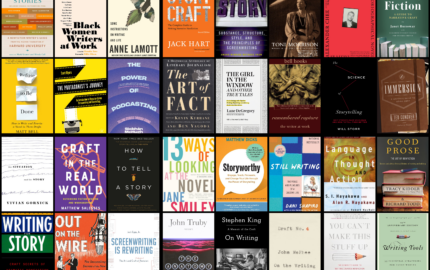Somewhere in the early pages of “Draft No. 4: On the Writing Process,” John McPhee gives a nod to daily news reporters. The author and New Yorker writer was explaining his own, wildly successful writing process, which he admitted sometimes involves lying on his back on his picnic table for weeks, gazing at the clouds, until the essence of a story — and how to tell it — starts to coalesce.
I have long revered McPhee: his solid and deep reporting; his thoughtful methodology for taking and organizing notes; his complex and creative approach to structure, which somehow manages to result in a clear and easy path for the reader. Or, as he said about that last item:
But as someone who has spent a career in the daily newspaper business, I bristled — more than a bit — as I read about the months and more he gets to work a story. So I appreciated his admission that he likely wouldn’t have made it in my world. And I snorted when he described a conversation he had with the late and iconic New Yorker editor William Shawn. Together, they had just finished McPhee’s first profile for the magazine, and McPhee asked Shawn how he could spend so much time with one writer on one story. Shawn’s answer: “It takes as long as it takes.”
In the daily news biz, it took only as much time as you had, which usually wasn’t much. The proud lament: Newspaper reporters could no more indulge in writer’s block than truckers could in “driver’s block.”
And yet, I understand the struggle. A lot of what I and other deadline writers produced was far from elegant. The same tortures of insecurity that keep some writers “blocked” for months or longer afflicts almost all of us. For some, the deadline clock just ticks more loudly. McPhee’s summary of that:
Free writing your way to a story
McPhee’s solution, which he stumbled on almost 50 years ago, was to start by writing “Dear Mother.” It let him pout about his struggle, but then identify what would be both compelling and credible to a reader about whom he cared. And perhaps more important, it got him started. If we never start, there is no way we will ever finish. So you start with mom and then:
“Dear Mother” won’t work for everyone. But the idea is sound: Identify someone you trust to be interested in your work but also honest about it, then write them a letter about what you are trying to say. The writing part is essential; putting thoughts on paper is different than blathering over a pint of ale. You don’t have to send the letter, of course. But you have to find your way into the mental space that gets you out of your notebook and head, and into the telling of a story.
 Whatever method you choose, it usually involves some version of “free writing.” In “Writing Down the Bones,” Natalie Goldberg explained her daily writing practice, which involved a set amount of time with some prompt to get her started. Her pen would move across the page, with no stopping and no rewriting, until the time was up. In “Bird by Bird,” Anne Lamott preaches the messy necessity of the “shitty first draft,” which some writers call “the vomit draft.” Writing coach Don Fry, a long-time instructor at The Poynter Institute, would lead a session where we had to turn off or cover our laptop screen, and type our stories without being able to fuss with them in the moment.
Whatever method you choose, it usually involves some version of “free writing.” In “Writing Down the Bones,” Natalie Goldberg explained her daily writing practice, which involved a set amount of time with some prompt to get her started. Her pen would move across the page, with no stopping and no rewriting, until the time was up. In “Bird by Bird,” Anne Lamott preaches the messy necessity of the “shitty first draft,” which some writers call “the vomit draft.” Writing coach Don Fry, a long-time instructor at The Poynter Institute, would lead a session where we had to turn off or cover our laptop screen, and type our stories without being able to fuss with them in the moment.
On a lark, I Googled “free writing.” Hundreds of testimonials, examples and lists upon lists of “prompts” to launch your first draft. Some seem silly, especially for serious journalists. What use is going on a word-wander about my 16th birthday or favorite shoes when I’m trying to write a coherent and interesting piece about flight paths or a court case? So I, like many of the students I’ve taught, reporters I’ve edited, writers I’ve coached, have been known to sniff at the process.
And yet … I have found it an invaluable approach in my workshops and, when I’m not being stubborn, my own work. My favorite go-to is an “artifact exercise,” which is also something I learned at The Poynter Institute. Workshop participants bring in some small item that has meaning. I beg them not to overthink what they choose (overthinking is endemic with writers, and one of the blocks to actually writing), but to grab something they’ve held onto for whatever reason. Starting with that item within sight, they begin to write (ideally by hand) for timed periods of four minutes, four minutes and another two minutes. Their pens must keep moving, even if all they scribble in stuck points is “I don’t know what to write, I don’t know what to write, I don’t know what to write.” (At one workshop, a writer had an entire passage that made a chant out of “F you, Jacqui.” In a more polished rewrite, he turned it into a nice bit of structural rhythm.) I watch the writers cringe as they begin; I hear the powerful essays they produce — in 10 minutes. Some are fully realized short stories; others are the seeds of something more.
So you aren’t writing a piece about your father’s dented fountain pen. But you can pick a key word or moment or person from the journalistic piece you’re wrestling with, and go. Ten minutes. What you write may not be the start of your final story, or may not show up at all. But all you’ve lost is 10 minutes, and you’ve gotten out of your head and onto paper (the screen).
 Two weeks ago, I led a weekend retreat with an eclectic group of 12 professional writers from a spectrum of disciplines. I have worked with them all before, so they know what to expect. But with only so many tricks in my bag, I fashioned a couple of new free-writing exercises. I watched them cringe. And then they wrote, and read and… wow. One even hit on an intriguing question, based on her prompt “The Pause Button.” She has been frustrated and blocked in her work, which she described as "meh." But now she found herself describing the pause button on videos and music: two vertical lines with a space in between:
Two weeks ago, I led a weekend retreat with an eclectic group of 12 professional writers from a spectrum of disciplines. I have worked with them all before, so they know what to expect. But with only so many tricks in my bag, I fashioned a couple of new free-writing exercises. I watched them cringe. And then they wrote, and read and… wow. One even hit on an intriguing question, based on her prompt “The Pause Button.” She has been frustrated and blocked in her work, which she described as "meh." But now she found herself describing the pause button on videos and music: two vertical lines with a space in between:
As we closed the weekend, I asked if they found value in the free writes. Several admitted they hated the doing of them. Then I asked them to define what value came out of that pain. Their answers:
We also talked about how hard it is to keep up that practice on your own, even if it just takes 10 minutes. So I asked a few of them to follow up with some free-written posts about free-writing. We start with a piece by a science freelancer who has connected the "syntax" of traditional Indian dance with the dance of artful writing.
I have long revered McPhee: his solid and deep reporting; his thoughtful methodology for taking and organizing notes; his complex and creative approach to structure, which somehow manages to result in a clear and easy path for the reader. Or, as he said about that last item:
Readers are not supposed to notice the structure. …A piece of writing has to start somewhere, go somewhere and sit down when it gets there.
But as someone who has spent a career in the daily newspaper business, I bristled — more than a bit — as I read about the months and more he gets to work a story. So I appreciated his admission that he likely wouldn’t have made it in my world. And I snorted when he described a conversation he had with the late and iconic New Yorker editor William Shawn. Together, they had just finished McPhee’s first profile for the magazine, and McPhee asked Shawn how he could spend so much time with one writer on one story. Shawn’s answer: “It takes as long as it takes.”
In the daily news biz, it took only as much time as you had, which usually wasn’t much. The proud lament: Newspaper reporters could no more indulge in writer’s block than truckers could in “driver’s block.”
And yet, I understand the struggle. A lot of what I and other deadline writers produced was far from elegant. The same tortures of insecurity that keep some writers “blocked” for months or longer afflicts almost all of us. For some, the deadline clock just ticks more loudly. McPhee’s summary of that:
“If you lack confidence in setting one word after another and sense that you are stuck in a place from which you will never be set free, if you feel sure that you will never make it and were not cut out to do this, if your prose seems stillborn and you completely lack confidence, you must be a writer.”
Free writing your way to a story
McPhee’s solution, which he stumbled on almost 50 years ago, was to start by writing “Dear Mother.” It let him pout about his struggle, but then identify what would be both compelling and credible to a reader about whom he cared. And perhaps more important, it got him started. If we never start, there is no way we will ever finish. So you start with mom and then:
“…go back and delete the ‘Dear Mother’ and all the whimpering and whining, and just keep the bear.”
“Dear Mother” won’t work for everyone. But the idea is sound: Identify someone you trust to be interested in your work but also honest about it, then write them a letter about what you are trying to say. The writing part is essential; putting thoughts on paper is different than blathering over a pint of ale. You don’t have to send the letter, of course. But you have to find your way into the mental space that gets you out of your notebook and head, and into the telling of a story.
 Whatever method you choose, it usually involves some version of “free writing.” In “Writing Down the Bones,” Natalie Goldberg explained her daily writing practice, which involved a set amount of time with some prompt to get her started. Her pen would move across the page, with no stopping and no rewriting, until the time was up. In “Bird by Bird,” Anne Lamott preaches the messy necessity of the “shitty first draft,” which some writers call “the vomit draft.” Writing coach Don Fry, a long-time instructor at The Poynter Institute, would lead a session where we had to turn off or cover our laptop screen, and type our stories without being able to fuss with them in the moment.
Whatever method you choose, it usually involves some version of “free writing.” In “Writing Down the Bones,” Natalie Goldberg explained her daily writing practice, which involved a set amount of time with some prompt to get her started. Her pen would move across the page, with no stopping and no rewriting, until the time was up. In “Bird by Bird,” Anne Lamott preaches the messy necessity of the “shitty first draft,” which some writers call “the vomit draft.” Writing coach Don Fry, a long-time instructor at The Poynter Institute, would lead a session where we had to turn off or cover our laptop screen, and type our stories without being able to fuss with them in the moment.On a lark, I Googled “free writing.” Hundreds of testimonials, examples and lists upon lists of “prompts” to launch your first draft. Some seem silly, especially for serious journalists. What use is going on a word-wander about my 16th birthday or favorite shoes when I’m trying to write a coherent and interesting piece about flight paths or a court case? So I, like many of the students I’ve taught, reporters I’ve edited, writers I’ve coached, have been known to sniff at the process.
And yet … I have found it an invaluable approach in my workshops and, when I’m not being stubborn, my own work. My favorite go-to is an “artifact exercise,” which is also something I learned at The Poynter Institute. Workshop participants bring in some small item that has meaning. I beg them not to overthink what they choose (overthinking is endemic with writers, and one of the blocks to actually writing), but to grab something they’ve held onto for whatever reason. Starting with that item within sight, they begin to write (ideally by hand) for timed periods of four minutes, four minutes and another two minutes. Their pens must keep moving, even if all they scribble in stuck points is “I don’t know what to write, I don’t know what to write, I don’t know what to write.” (At one workshop, a writer had an entire passage that made a chant out of “F you, Jacqui.” In a more polished rewrite, he turned it into a nice bit of structural rhythm.) I watch the writers cringe as they begin; I hear the powerful essays they produce — in 10 minutes. Some are fully realized short stories; others are the seeds of something more.
The upside of the free write
So you aren’t writing a piece about your father’s dented fountain pen. But you can pick a key word or moment or person from the journalistic piece you’re wrestling with, and go. Ten minutes. What you write may not be the start of your final story, or may not show up at all. But all you’ve lost is 10 minutes, and you’ve gotten out of your head and onto paper (the screen).
 Two weeks ago, I led a weekend retreat with an eclectic group of 12 professional writers from a spectrum of disciplines. I have worked with them all before, so they know what to expect. But with only so many tricks in my bag, I fashioned a couple of new free-writing exercises. I watched them cringe. And then they wrote, and read and… wow. One even hit on an intriguing question, based on her prompt “The Pause Button.” She has been frustrated and blocked in her work, which she described as "meh." But now she found herself describing the pause button on videos and music: two vertical lines with a space in between:
Two weeks ago, I led a weekend retreat with an eclectic group of 12 professional writers from a spectrum of disciplines. I have worked with them all before, so they know what to expect. But with only so many tricks in my bag, I fashioned a couple of new free-writing exercises. I watched them cringe. And then they wrote, and read and… wow. One even hit on an intriguing question, based on her prompt “The Pause Button.” She has been frustrated and blocked in her work, which she described as "meh." But now she found herself describing the pause button on videos and music: two vertical lines with a space in between:Why do we call it writer’s block? Why don’t we call it ‘writer’s space?’
As we closed the weekend, I asked if they found value in the free writes. Several admitted they hated the doing of them. Then I asked them to define what value came out of that pain. Their answers:
- It gives me some place to start.
- It lubes my rusty writing gears.
- I discover what moves me.
- It reminds me of the thing that drew or excited me about an idea in the first place.
- It reminds me to trust myself.
- It shows me that I do have craft skills.
- I feel like I’m writing in my voice.
We also talked about how hard it is to keep up that practice on your own, even if it just takes 10 minutes. So I asked a few of them to follow up with some free-written posts about free-writing. We start with a piece by a science freelancer who has connected the "syntax" of traditional Indian dance with the dance of artful writing.



